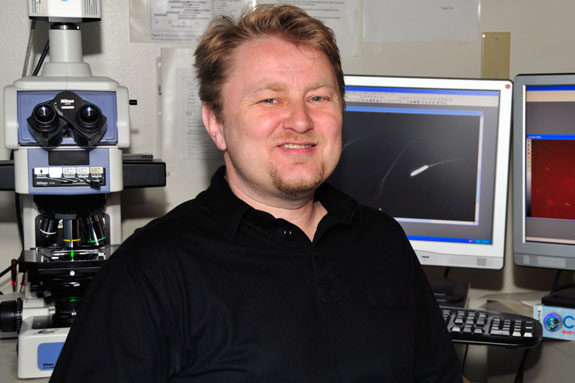New research from University of Missouri reproductive scientist Peter Sutovsky identifies faulty sperm and takes them out of the A.I. equation. “There are many types of hidden sperm defects that are not obvious and cannot be identified by conventional analysis,” Sutovsky said. “We look at biomarkers to improve our ability to correctly evaluate semen and to give us an idea about fertility of a bull that is used in an artificial insemination program.”
Those markers serve as a red flag, giving researchers a tool to identify faulty sperm.One of those flags is ubiquitin, a protein found in most tissues. One function of ubiquitin is to tag other proteins that are defective or no longer needed. Scientists have dubbed ubiquitin the “kiss of death” because proteins tagged with it are dismantled and recycled.
In faulty sperm, ubiquitin migrates to the surface of the cell. Using nanotechnology, Sutovsky coats small metal particles with an antibody that lets the nanoparticles bind to ubiquitin on the defective sperm, then uses a strong magnet to literally pull down those cells.
“When we pull down bad sperm in a test tube, we can skim off the good sperm cells,” Sutovsky said. “That means that we can use fewer cells per dose if we isolate only the good ones.”
Since ubiquitin is ubiquitous in all cells, this process can work similarly with other animal species.
Sutovsky’s research is funded by the USDA and the Missouri Life Sciences Trust Fund. PD
—From University of Missouri Extension news release
PHOTO
Peter Sutovsky uses imaging technology to track ubiquitin, a protein that helps recycle no longer needed parts of sperm cells after fertilization. This protein attaches itself to the surface of faulty sperm. The same imaging technology is used to study in vitro fertilization. Photo by Jessica Salmond, courtesy of MU Cooperative Media Group.




